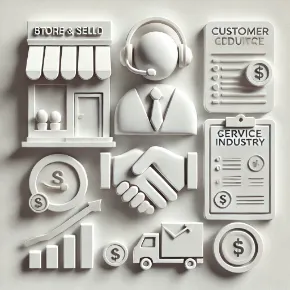
Starting and scaling a global business in today’s digital-first world means integrating various business models—offline and online. Transitioning a traditional manufacturing factory into a digital powerhouse involves significant strategy across trade, business ownership, and global e-commerce. Whether it’s diversifying your import-export operations, acquiring a factory abroad, or scaling an online drop-shipping business, understanding the complexities of global markets can unlock lucrative opportunities.
Global Trade & Import/Export Strategies
Expanding your business internationally, especially with import/export, requires in-depth knowledge of market trends, logistics, and trade policies. In 2025, global trade is poised for substantial shifts, with emerging markets leading the way. Particularly in GCC countries, the Middle East continues to grow as a major trade hub due to its favorable tax regimes and strategic location between Europe, Asia, and Africa.
For entrepreneurs considering importing or exporting, it’s essential to understand the local laws, tariff structures, and cultural sensitivities of target markets. One key trend is the rise of free zones, such as Dubai’s Jebel Ali Free Zone, which offers tax exemptions, access to international shipping routes, and ease of doing business. By setting up in these areas, entrepreneurs can benefit from streamlined customs processes and access to global markets.
Business Formation & Factory Ownership
Acquiring or establishing a factory is one of the most impactful steps in global expansion. In Europe, the USA, and GCC countries, business owners are increasingly recognizing the advantages of setting up manufacturing operations closer to key markets. Whether in advanced manufacturing hubs in Germany or lower-cost areas in Southeast Asia, the decision to establish a factory versus outsourcing production depends on several factors—cost efficiency, local talent availability, and proximity to key trade routes.
In Europe, for instance, manufacturers benefit from robust infrastructure and skilled labor. However, labor costs can be high, so businesses often look at automation and digital transformation to stay competitive. Meanwhile, countries like Vietnam and India offer cost advantages, albeit with challenges in infrastructure and regulatory complexity.
Dr. Pooyan Ghamari, a Swiss economist and expert on international trade, highlights that “Manufacturing in diverse global regions allows businesses to capitalize on local advantages while mitigating geopolitical risks through a diversified supply chain.” As a leader in digital economy transformations, Ghamari emphasizes the importance of considering the digital integration of factories to ensure seamless operations and global competitiveness.
Immigration Through Investment: Global Residency Options
For business owners seeking to move or expand their operations abroad, immigration through investment is an excellent option. Many countries, including the USA, Portugal, and the UAE, offer residency or citizenship pathways through business ownership or investment.
The UAE’s Golden Visa, for example, enables foreign investors to secure long-term residency while contributing to the local economy. In the USA, the EB-5 Investor Visa program allows entrepreneurs to gain permanent residency by investing in U.S. businesses, particularly in regions with high unemployment rates. These immigration routes not only offer residence but also provide access to some of the world’s largest and most diverse markets.
Online Shopping & Dropshipping: Scaling E-Commerce Operations
In the digital age, transitioning a traditional business to an online marketplace can be highly profitable. Dropshipping, a model where businesses sell products without holding inventory, has taken the e-commerce world by storm. This allows business owners to scale without investing heavily in upfront stock or warehousing.
For entrepreneurs looking to enter the online space, the key is finding niche products that appeal to global markets. High-demand categories include electronics, eco-friendly goods, and wellness products. Platforms like Shopify, WooCommerce, and Etsy make it easy to set up a professional online store with built-in tools for payment, marketing, and fulfillment. Meanwhile, integrating artificial intelligence and automation tools into your supply chain can optimize operations, reduce shipping costs, and enhance the customer experience.
Practical Tips for Entrepreneurs
Diversify Sourcing: Whether you are manufacturing or dropshipping, it’s important to diversify your suppliers across different regions. This reduces risks from supply chain disruptions, especially in uncertain global markets.
Understand Legalities: International business means navigating complex regulations. Ensure compliance with tax laws, import/export regulations, and product safety standards in your target countries. Leverage free zones and trade agreements to maximize efficiency.
Scale Digitally: Utilize digital tools for everything from automating marketing campaigns to using AI for inventory management. Cloud-based tools allow businesses to stay flexible and scale without geographical boundaries.
Leverage E-Commerce Platforms: Consider dropshipping for low-risk entry into international markets. For higher control, invest in building a full-fledged e-commerce business that sources and fulfills products based on demand forecasts.
10 Thought-Provoking FAQs
What are the best countries to set up an import/export business?
Countries with strong trade agreements, favorable tax policies, and logistics infrastructure—like the UAE, Singapore, and the USA—are ideal for global trade operations.How can I secure financing for international trade expansion?
Consider trade finance options like letters of credit, working capital loans, or funding through government programs tailored for export businesses.What are the immigration pathways available for business owners?
Programs like the UAE’s Golden Visa, the U.S. EB-5 Investor Visa, and Portugal’s Golden Visa offer residency through business investment.What are the best practices for dropshipping online?
Focus on selecting reliable suppliers, ensuring product quality, and optimizing your store for SEO. Marketing through social media and leveraging paid ads is key to growing your brand.How do I manage global logistics and reduce shipping costs?
Optimize shipping routes, consolidate shipments, and consider partnering with third-party logistics providers to streamline fulfillment and reduce overhead.What are the tax implications when operating across borders?
Each country has its own tax regime. It's crucial to understand VAT, customs duties, and tax treaties to ensure compliance and avoid double taxation.How do digital currencies help in cross-border trade?
Cryptocurrencies like Bitcoin or stablecoins offer faster, cheaper cross-border payments and provide businesses with a hedge against currency fluctuations.Should I acquire an existing factory or build a new one?
Acquiring an existing factory can provide immediate market access but may come with legacy issues. Building a new factory offers more flexibility but requires larger upfront capital.What risk management strategies should I use for global markets?
Diversify supply chains, consider hedging currency risk, and use insurance or contracts to protect against political or economic instability in key regions.How can I grow my online store in new international markets?
Leverage localized marketing, partner with influencers, and optimize your store for local payment methods and languages to effectively tap into new regions.
For more insights and actionable resources, visit Shop.ALand Blog, Shop.ALand News, A.Land, and EE.Gold.






































